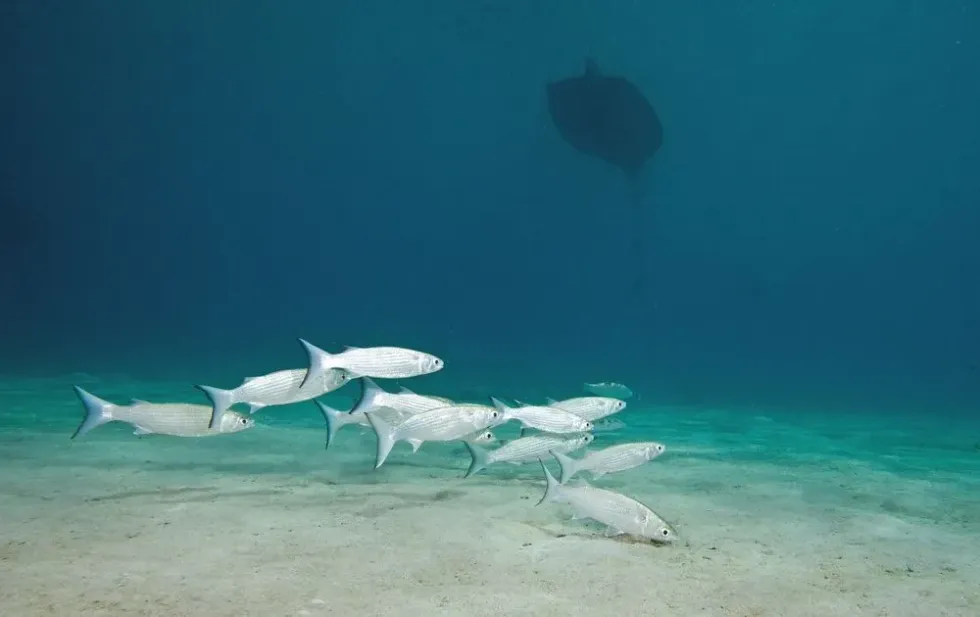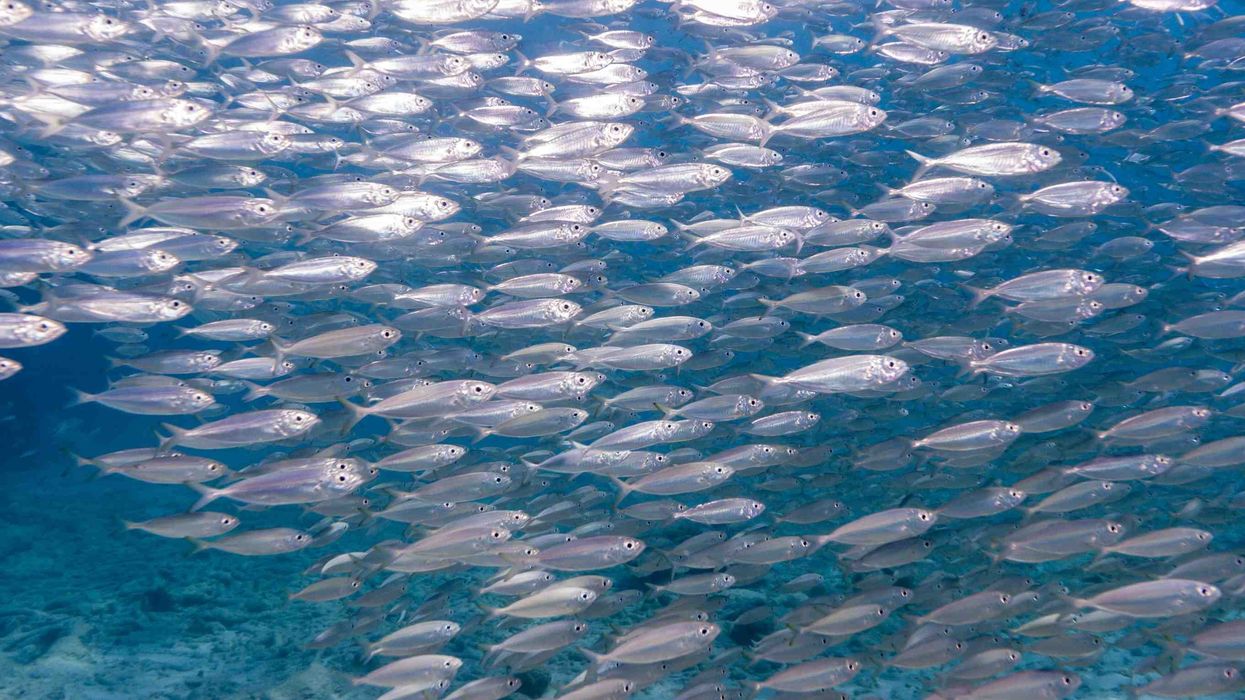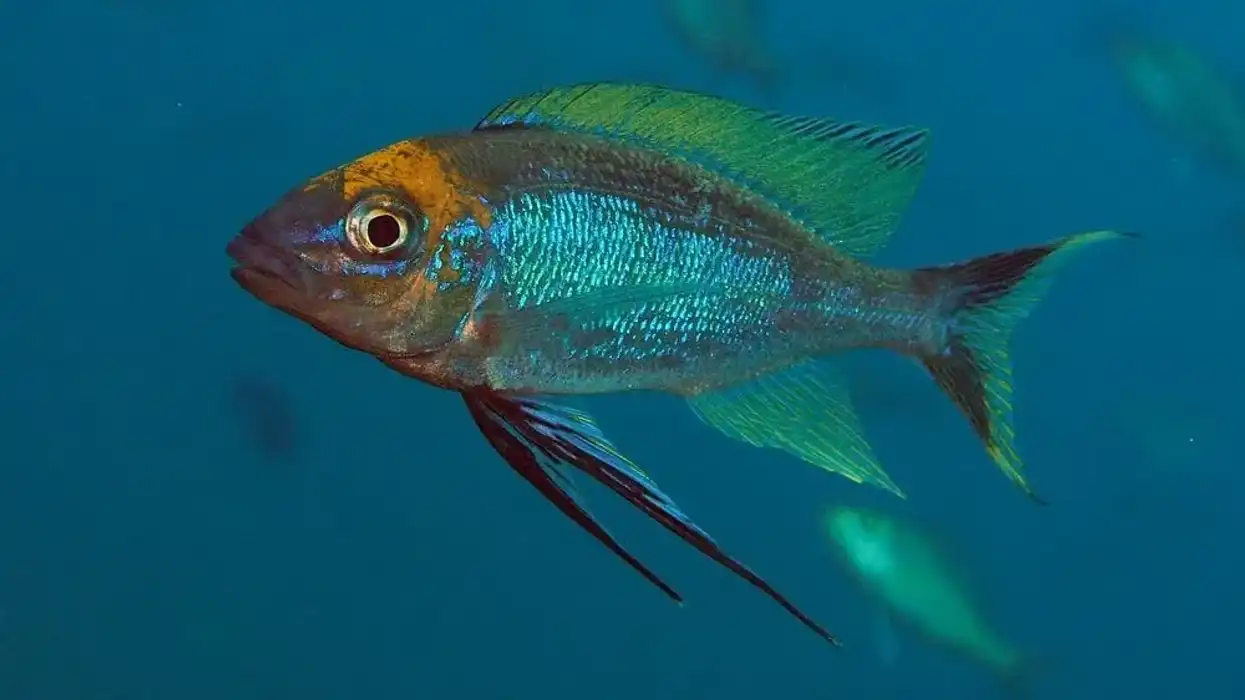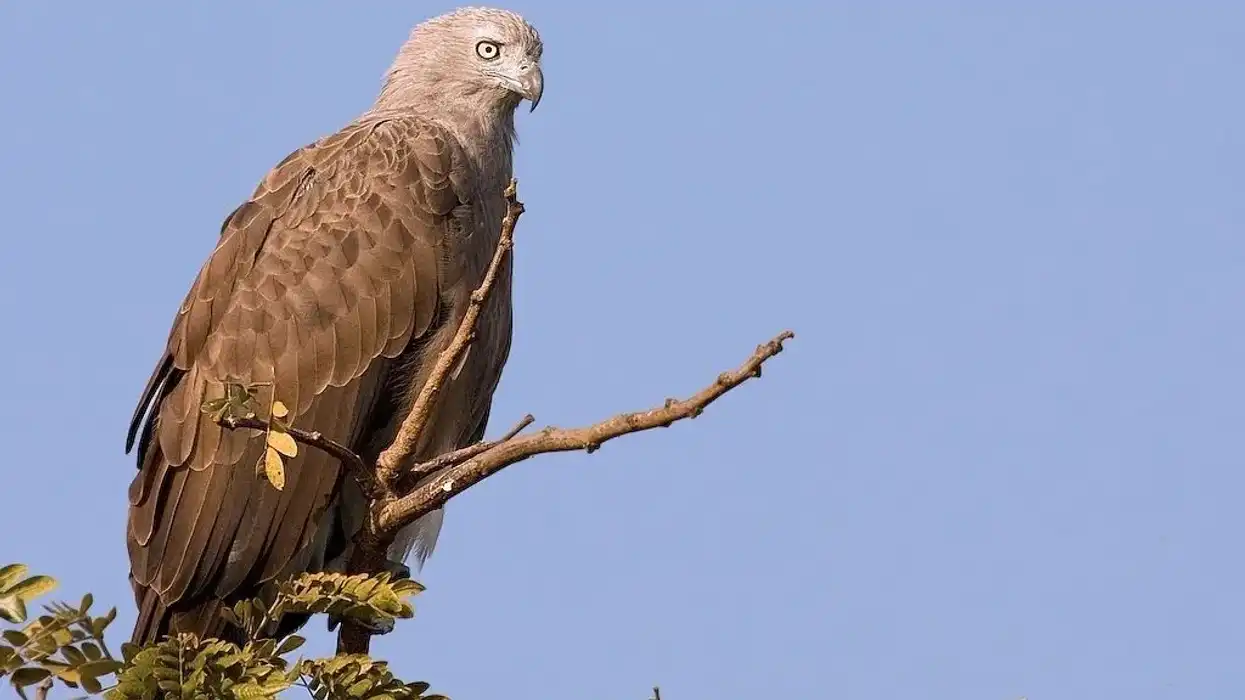The silver mullet is also known by the name white mullet and this fish is a member of the family Mugilidae. Found mostly in warm sandy coastal areas and in littoral pools, this species can also be seen in brackish lagoons, estuaries in rivers, and muddy substrates.
All mullets, especially the silver mullet and the striped mullet, have a lot in common. The ecology, reproduction habits, and feeding habits are all similar between the species.
Mullets are characterized by having two dorsal fins. The first dorsal fin consists of five sharp spines and the second dorsal fin has eight soft rays.
In Florida, the two most extensively harvested species of mullet in the commercial space are the striped mullet (Mugil cephalus) and white mullet (Mugil curema).
The white mullet or silver mullet is often confused with the striped mullet. Apart from some physical differences in the species, there is not much to tell a silver mullet and a striped mullet apart.
The horizontal stripes on the adults of the striped mullet help to make it easier to distinguish the species, however, the juveniles of the striped mullet are exactly the same as the adults of the silver mullet.
Feed mullets with detritus and micro-algae and as the fish species mature, more food will be ingested. The fish also features in most menus all around the globe.
White mullet roe has a rich, salty piquancy and can be eaten both baked and raw. However, for longer storage, the roe needs to be kept in a cool and dry place.
For more relatable content, check out these chum salmon facts and rainbow trout interesting facts.
Silver Mullet Interesting Facts
What type of animal is a silver mullet?
The silver mullet is a species of mullet fish of the family Mugilidae.
What class of animal does a silver mullet belong to?
The silver mullet falls under the class of Actinopterygii in the kingdom of Animalia. This class features ray-finned fishes.
How many silver mullets are there in the world?
The population data on the silver mullet is not available. However, there is currently no immediate danger to the life of this species.
Where does a silver mullet live?
The habitat of a silver mullet fish is quite diverse. Florida is a place where these marine fishes are heavily harvested for commercial use.
Although there are many species of mullets that live in freshwater, the silver mullet is found in only Atlantic and Pacific waters. In the eastern Atlantic, the fish can be found in Namibia and Senegal. In the western Atlantic, the mullet is seen in Argentina and Cape Cod.
Rarely, this fish also can be found in the waters surrounding Nova Scotia. In the eastern Pacific, silver mullets are found in Chile and the Gulf of California.
What is a silver mullet's habitat?
The habitat of the silver mullet, as well as the striped mullet, consists of warm coastal seas, estuaries, and brackish lagoons. The fish is found along warm, sandy coasts and littoral pools.
They are also found in rivers and on muddy substrates. Both fishes are known to pick up mud from the seabed and spit it back out. This process includes filtering the mud with their gill rakers and inner teeth.
These silver mullets can tolerate a large amount of salinity and are seen both in spring and saltwater.
Silver mullet juveniles are found in estuaries and coastal lagoons.
Who do silver mullets live with?
Adults are found in medium-large schools.
How long does a silver mullet live?
The life span of a silver mullet is around four to seven years.
How do they reproduce?
Reproduction is meant to be similar between the two species. However, the number of eggs laid by white mullets is not known.
The adult striped mullet spawn in saltwater but spend most of the time in freshwater. They migrate during autumn and winter to offshore areas to spawn. Sometimes, this fish is known for spawning large distances offshore.
Spawning is usually offshore or near beaches. Around 0.5 to 2.0 million eggs are laid by the female, and the minimum spawn size of females is 12.2-13.3 in (31-33.7 cm). In the early fall season, large schools are known to migrate to spawning areas.
The conditions needed to migrate are lower water temperatures, the passage of cold fronts, and a drop in barometric pressure. After they migrate and spawn, the eggs hatch. There is no parental care provided.
Juveniles are known to occur offshore.
What is their conservation status?
The conservation status of the silver mullet is categorized as Least Concern by the IUCN Red List. There is no danger to this species currently.
Apart from Florida, this fish species is cultivated in most parts of the world. There are various different uses of silver mullet including bait and food.
Silver Mullet Fun Facts
What do silver mullets look like?
The silver mullet has a bluish-gray coloration on the back, silver color on the side, and white below. Small scales are seen extending onto its dorsal fins and anal fins. There is also a dark spot at the base of the pectoral fin.
The second dorsal fin is seen behind the anal one. Small triangular mouths are common with all mullets. The silver mullet has two to three rows of flattened teeth with an outer row of inwardly curved teeth behind the thick upper lips.
There is not much difference between a young striped mullet and an adult silver mullet, meaning they look exactly the same. However, adult striped mullets have horizontal stripes on their body, which is lacking in white mullets. The striped mullet has a small and terminal mouth. The mouth has inconspicuous teeth and the fish has a blunt nose.
How cute are they?
They are not usually considered cute.
How do they communicate?
The mode of communication is not known. It is probably done by chemical and visual cues.
How big is a silver mullet?
The length of a white mullet ranges from 3-8 in (7.62-20.32 cm). This length is shorter than a striped mullet.
The red mullet found in the Mediterranean Sea, North Atlantic Ocean, and the Black Sea has a range of length up to 8-12 in (20.3-30.4 cm).
How fast can a silver mullet swim?
The speed is not known.
How much does a silver mullet weigh?
The weight of a silver mullet ranges from 0.3-1 lb (0.13-0.45 kg).
The whale shark is the biggest fish in the marine world. Although there are some species of mullet that are found in freshwater habitats, the silver mullet is found in tropical and subtropical waters. Adult whale sharks have a weight with a a range of 29998-40000 lb (13606.8-18143.7 kg).
What are the male and female names of the species?
Males and females are not given different names.
What would you call a baby silver mullet?
Babies of this species are called juveniles.
What do they eat?
It is not that hard to keep white mullet as a pet as they feed on zooplankton, dead plant matter, and detritus. The basic diet of a white mullet consists of zooplankton, dead plant matter, and detritus. Algae constitutes a major part of their diet.
Predators of most of the species of mullet include spotted seatrout, humans, sharks, and pelicans.
Are they dangerous?
They are not at all dangerous or poisonous. People all over the world find mullet a healthy fish to eat.
Would they make a good pet?
They are not usually considered pets.
Did you know...
In most species of mullets, their stomachs are made gizzard-like which helps to grind food like algae and other materials.
There are numerous silver mullet recipes available all over the world. However, even with very good taste, these fishes end up being used as bait more than food. This fish is used as bait to catch some species of crabs by fishers.
Harvested commercially in Florida, the silver mullet is quite common in those areas. They are sometimes eaten as food when larger striped mullet is not available.
Silver mullet identification can be marked by a lack of stripes which is common in other species of mullet.
Are silver mullets endangered?
The silver mullet is considered as one of the least concerned species at the moment as there is no immediate danger to the population of this species. However, overfishing and habitat degradation has accounted for the decrease in the population of this mullet species. All these have also affected the spawning cycle for the white mullet.
What's the difference between a silver and black mullet?
Comparison between the striped mullet/black mullet vs silver mullet is difficult because if they are similar in size, it's hard to distinguish between the mullet species. The white mullet is usually smaller with a lighter body and less vivid stripes.
Another distinguishing feature is that tail of a black mullet is fully dark however the caudal fin of a white mullet is edged in black, making a V shape.
Here at Kidadl, we have carefully created lots of interesting family-friendly animal facts for everyone to discover! For more relatable content, check out these Arctic char facts and bonito fish fun facts for kids.
You can even occupy yourself at home by coloring in one of our free printable silver mullet coloring pages.










